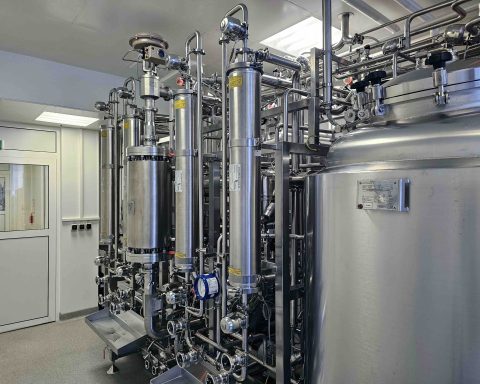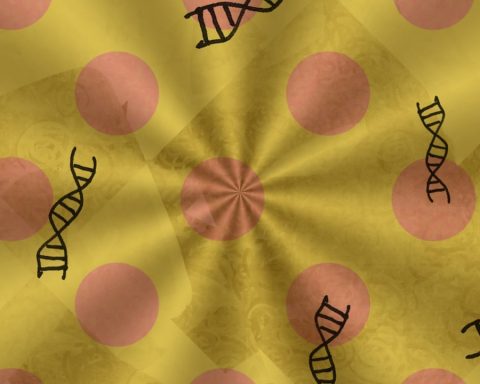Ion channels are proteins that get embedded in the cell membranes of living organisms. Electrical signaling within and between cells happens because of them. The ions carry the signal that can’t pass the cell membrane in normal conditions. However, when ion channels open as a response to certain conditions, they can diffuse passively. The electrical signaling that takes place because of ion channels is an essential component of different physiological processes. Examples of these physiological processes are hormone secretion, nutrient uptake, control of the heart, and other muscles’ contractile activity, as well as electrical activity generation in nerves.
Ion channels also play a role in the development of many diseases. When the function of ion channels get defective, human diseases, such as neural and muscular disorders, cystic fibrosis, epilepsy, and pathological pain conditions, develop.
Types Of Ion Channels
A cell has a hundred to a thousand different types of ion channels. More often than not, each ion channel only allows a single specific ion to diffuse through it. It’s the reason why their common names get derived from the ion that permeates through them. Examples are Cl-, Ca2+, Na+, and K+ ion channels. Over 400 putative ion channels got identified recently because of the human genome sequencing. However, only about a hundred of these ion channels got cloned or have undergone functional testing.
Since ion channels regulate a large number of physiological processes and play a role in many diseases, they’re highly interesting targets for the development of new drugs. In fact, there’s about twenty percent of all the registered drugs in the market today that target ion channels. Altered cellular behavior results from these drugs because of modulating specific ion channels.
Ion Channel Screening: Why Is It Relevant?
The process of ion channel screening is the streamlining of the use of ion channels for drug discovery and development. It follows the same principle as screening in healthcare research, wherein different chemical compounds get tested for the ability to either stimulate or inhibit a target.
Exploring Ion Channels: Two Main Methods
When investigating ion channels, two main methods usually get utilized. These methods are the direct and indirect ways of ion channel investigation. Patch-clamp is the only direct method available, which is more accurate than the indirect method, but also more time-consuming. Indirect methods, on the other hand, are much faster but less accurate.
Nowadays, however, ion channel screening got a massive boost because of artificial intelligence and other technological advancements. Such an aid from technology makes a more detailed view of the interaction between ion channels and compounds possible.
Below is a closer look at the two main methods for ion channel investigation:
Patch Clamping (Direct Method)
The patch-clamp technique is the gold standard when it comes to ion channel research. A tiny glass pipette that contains an electrode gets utilized in a traditional experiment using this technique. The glass gets attached or tightly sealed to the cell membrane. Through the glass pipette, suction gets applied to the cell membrane to rupture it manually. The electrode connects to an amplifier and is what measures the tiny currents that pass through the ion channels. High-level insight in electrophysiology, as well as deep patience, are essential when doing patch-clamp experiments. The typical throughput can be from three to ten experiments each day.
Indirect Methods
There are several options when studying ion channels through indirect methods. The most important ones are those that make use of fluorescent dyes. Using specialized plate readers, the analysis of the dyes that get loaded into the cells becomes possible. What the reader detects is the concentration change of specific ions. Such a change results from ion channel activity when the voltage across the cell membrane changes.
As previously mentioned, the benefits of using indirect methods are high throughput as well as low cost per data point. However, they also mean a lack of voltage control across the cell membrane, low sensitivity, and low accuracy. That said, the types of ion channels that indirect methods can study are limited. The experiments will also get limited to the analysis of only simple drug and ion channel interactions.
Conclusion
No doubt, ion channel screening is an essential process in drug discovery.
Most pharmaceutical companies start their drug discovery process with a specific ion channel. The ion channel serves as the drug development target.
The whole ion channel screening process involves a target validation phase that gets followed by an assay to measure target interactions. The pharmaceutical companies will then search for chemical compounds, out of the millions in their vast libraries, that have the desired effect on the target. Chemical modifications will then take place to make one of the hits suitable as a drug.
Without the help of ion channel screening, drug discovery and development through ion channels will take a very long time for pharmaceutical companies to complete. Drugs produced will also be less effective.
About Author: Josephine Kleban is an experienced pharmacist who writes articles about the latest discoveries in the healthcare industry. Most of Josephine’s articles talk about the prevalence of artificial intelligence and eco-friendly packaging used by healthcare professionals and institutions.







